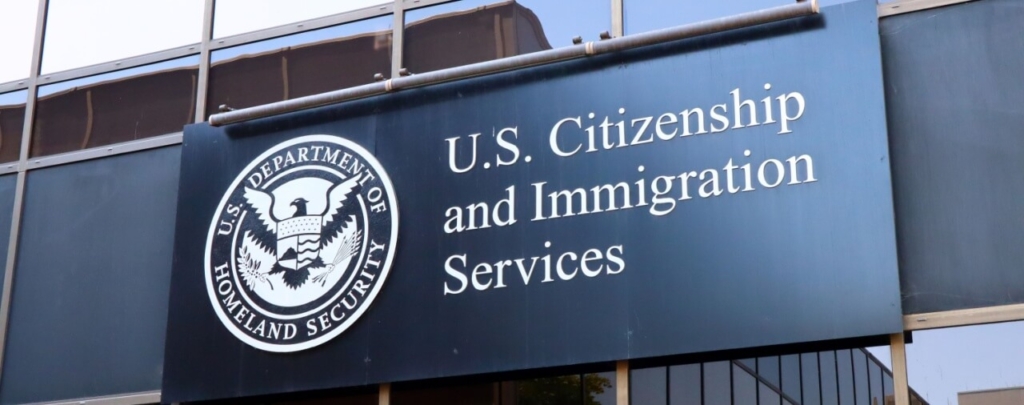(Update: June 29, 2017): On June 26, 2017, the Supreme Court ordered re-argument in Sessions v. Dimaya for next term [see article]. We will post more information when it is available.
Introduction
On January 17, 2017, the Supreme Court of the United States heard oral arguments in Lynch v. Dimaya, 15-1498. The case concerns whether 18 U.S.C. 16(b) is unconstitutionally vague as it is incorporated into the immigration laws at section 101(a)(43)(F) of the Immigration and Nationality Act (INA). Subsequent to those arguments, Attorney General Jeff Sessions replaced former Attorney General Loretta Lynch. Accordingly, the case is now called Sessions v. Dimaya. We will use that name going forward.
Before reading this article, please see the full post on the case that we wrote when the Supreme Court granted the government’s cert petition [see article]. Additionally, please see the article we wrote about the precedent decision of the United States Court of Appeals for the Ninth Circuit, Dimaya v. Lynch, 803 F.3d 1110 (9th Cir. 2015) [PDF version] [see article], which is being appealed. In Dimaya v. Lynch, the Ninth Circuit held that 18 U.S.C. 16(b) was void for vagueness as incorporated into the immigration laws. The Ninth Circuit relied heavily on the Supreme Court decision in Johnson v. United States, 333 U.S. 10 (2015) [PDF version]. The instant case discusses the Supreme Court decision in Leocal v. Ashcroft, 543 U.S. 1 (2004) [PDF version], wherein the Supreme Court briefly discussed 18 U.S.C. 16(b) and explained that “burglary” may be the classic crime that would fall under the provision [see article].
In this article, we will examine the oral arguments made by the Government and by the respondent and contemplate what these arguments may mean going forward as the Supreme Court looks to decide Sessions v. Dimaya later this term. Please consult the following link to see the text of the oral arguments [PDF version].
Understanding the Key Statute
18 U.S.C. 16(a) specifically defines a “crime of violence” as an offense that has as an element the use, attempted use, or threated use of physical force against the person or property of another.
18 U.S.C. 16(b) additionally defines the term “crime of violence” as also including:
[a]ny other offense that is a felony and that, by its nature, involves a substantial risk that physical force against the person or property of another may be used in the course of committing the offense.
18 U.S.C. 16 is incorporated into the immigration laws through section 101(a)(43)(F) of the INA, which relies upon it for the definition of aggravated felony crime of violence. The question before the Supreme Court is whether 18 U.S.C. 16(b) — the “residual clause” of 18 U.S.C. 16 — is unconstitutionally vague as incorporated into the immigration laws.
Oral Arguments
In cases before the Supreme Court, both sides brief the Justices and then present their arguments. In the following sections, we will examine the arguments by and questions for the government and the respondent before the Court. The government’s argument was presented by then-Deputy Solicitor General Edwin S. Kneedler. The respondent was represented by E. Joshua Rosenkranz.
Government’s Oral Argument
The Government argued that the Ninth Circuit was wrong in applying Johnson to the incorporation of 18 U.S.C. 16(b) for two reasons:
1. The standard of vagueness in an immigration proceeding is not the same as in a criminal proceeding. Immigration proceedings are administered by the executive branch — rather than the judiciary — and are civil in nature. The Government noted that the Constitution does not require prior notice that conduct may lead to removal.
2. Regardless of the differences between immigration proceedings and criminal proceedings, the application of the criminal vagueness standard of Johnson does not render 18 U.S.C. 16(b) void for vagueness.
The Government established the two central pillars of its argument right away. First, the Government relied heavily on the distinction between civil immigration proceedings and criminal proceedings in support of its position that the standards for vagueness are very different in the civil immigration context than in the criminal context. Alternatively, the Government argued that, because 18 U.S.C. 16(b) was worded differently than the statute scrutinized in Johnson, application of the Johnson vagueness standard to it mandated a different outcome. To this effect, the Government relied heavily on the Supreme Court decision in Leocal.
The Government’s position received heavy scrutiny from Justices Ruth Bader Ginsburg, Sonia Sotomayor, and especially Elena Kagan. In the following sections, we will highlight some of the most interesting exchanges, including a very important question from Justice Anthony Kennedy.
Justice Ginsburg noted that in Johnson the Government had taken the position that 18 U.S.C. 16(b) would be vulnerable to reversal because it could be subject to the same vagueness objection as the statute that was at issue in Johnson. The Government countered that it had merely been responding to the arguments that were made by the appellant in Johnson, and that Johnson was, in any event, ultimately decided on narrower grounds. To this effect, the Government argued that 18 U.S.C. 16(b) was distinguishable from the statutory interpretation issue in Johnson. Justices Ginsburg, Sotomayor, and Kagan asked pointed questions that seemed to signify a lack of satisfaction with the Government’s position on the distinguishability of 18 U.S.C. 16(b).
The most pointed questioning on the breadth of 18 U.S.C. 16(b) came from Justice Kagan. The Government had taken the position that Leocal made clear that 18 U.S.C. 16(b) “requires a risk of the use of physical force, the — an act of violent crime.” Accordingly, under questioning from Justice Kagan the Government argued that mere possession of a sawed off shotgun would not be covered under 18 U.S.C. 16(b), contrasting simple possession of the weapon with an indicator of the weapon’s affirmative use during commission of another crime. The discussion then veered toward whether generic burglary would be covered by 18 U.S.C. 16(b). The Government took the position that burglary does, “by its nature,” entail a risk of the use of physical force, as required by the Supreme Court in Leocal. Accordingly, the Government necessarily argued that the burglary example was distinguishable from the shotgun example, and that the crime of burglary would be covered by 18 U.S.C. 16(b) (depending on the language of the burglary statute in question), while possession of shotgun would not be covered. Justice Kagan seemed cynical of the argument that burglary was distinguishable from the shotgun example, which the Court had found problematic in Johnson.
Under further questioning from Justice Kagan, the Government articulated its position that in order to determine whether a conviction falls under 18 U.S.C. 16(b), one must assess the elements of the conviction and evaluate the risk of the use of physical force against the person or property of another. Justice Kagan asked whether vehicular flight would fall under 18 U.S.C. 16(b). The Government did not offer a general answer, restating its position that an elements-based approach would be needed to determine whether a specific conviction for vehicular flight meets the standard of 18 U.S.C. 16(b).
Justices Kagan and Sotomayor then returned the discussion to the distinction — or lack thereof — between burglary and possession of a shotgun. Justice Sotomayor noted that the actual use of force is not necessary for the commission of a burglary, no more than it is for the crime of possessing a shotgun, but that both could arguably entail an enhanced chance that physical force is used against another during the burglary or while possessing the shotgun. To answer this question, the Government argued that the actual elements of the crime of burglary varies among jurisdictions, and argued that an elements-based approach is required to determine the elements of a specific burglary statute — what “the state legislature was driving at” — to ascertain the risk addressed by the offense.
Justice Kennedy then questioned the Government on its first argument that the statutory vagueness standard in immigration proceedings is different than in Johnson, which was addressing the interpretation of a criminal statute in a criminal proceeding. Justice Kennedy noted that in Jordan v. De George, 341 U.S. 223 (1951) [PDF version], the Supreme Court rejected a constitutional vagueness challenge to a statute regarding crimes of moral turpitude in the immigration context, but nevertheless found that it could review the question. In response, the Government called De George a “drive-by ruling,” noting that the Court had not been briefed on the issue in that case. Indeed, the Government argued, De George did not even address Mahler v. Eby, 264 U.S. 32 (1924) [PDF version], wherein, the Government suggested, the Supreme Court had previously taken the position that a looser standard of vagueness would apply in immigration cases. Finally, the Government noted that the ex post de facto clause does not apply to immigration scenarios, meaning that an individual may be removed for conduct that was not a basis for removal before he or she engaged in such conduct.
Respondent’s Oral Argument
The respondent argued that 18 U.S.C. 16(b) was not distinguishable from the residual clause at issue in Johnson to the extent that it could survive a vagueness challenge under the Johnson precedent. Furthermore, as we will see, the respondent argued that the consequences of an aggravated felony conviction are severe enough to trigger judicial scrutiny to determine whether 18 U.S.C. 16(b) as incorporated in section 101(a)(43)(F) of the INA is void for vagueness.
The respondent received questioning from most of the Justices on a variety of issues related to his position. Justice Samuel Alito in particular posed difficult questions about the scope of a ruling in the respondent’s favor, and about the applicability of De George to the respondent’s arguments.
Justice Kagan noted that the residual clause at question in Johnson had been subject to extensive litigation prior to the Supreme Court finding the statute void for vagueness, and she suggested that 18 U.S.C. 16(b) may be distinguishable in that sense. The respondent argued that circuit courts have split on the proper reading of 18 U.S.C. 16(b) in the immigration context, including in cases with nearly identical elements. Thus, the respondent argued that the judicial experience with the residual clause at issue in Johnson and with 18 U.S.C. 16(b) were similar in terms of ripeness for review.
Justice Ginsburg asked the respondent to offer a position on whether 18 U.S.C. 16(b) is more specific than the residual clause at issue in Johnson. The respondent took the position that it was not distinguishable to the extent that it was not covered by Johnson. The respondent’s argument to this effect was premised on the assertion that “in the course of committing an offense” does not entail a temporal limitation. Under this reading, one may conclude that the shotgun example would be covered by 18 U.S.C. 16(b), which is a different reading of the statute than offered by the Government.
Justice Alito than asked the respondent about how a decision in his favor would affect the adjudication of hypothetical crimes involving moral turpitude in the criminal context (e.g., if a criminal offense for a crime of moral turpitude led to a sentence of up to 20 years in prison). The respondent took the position that such a criminal moral turpitude statute would be problematic on vagueness grounds “because you don’t have an administrative agency that gives content to the moral turpitude language the way you do … in the immigration context.” Justice Alto called this answer surprising, and noted that in De George, the Supreme Court held that the immigration moral turpitude statute satisfied the applicable vagueness standard in the deportation context. To this effect, Justice Alito asked the respondent why the moral turpitude statute would satisfy vagueness standards in the immigration context but not in the criminal context. The respondent’s position was that administrative agencies have given context to the definition of a crime of moral turpitude, and therefore that the definition is well understood, unlike 18 U.S.C. 16(b). However, Justice Alito seemed unsatisfied with that answer, asking whether various crimes were crimes involving moral turpitude, and not eliciting definitive answers from the respondent.
Chief Justice John Roberts noted that the residual clause at issue in Johnson caused confusion in part by the fact that it also relied upon predicate offenses (note that the residual clause in Johnson was a sentence-enhancement statute). However, the respondent did not find that the distinction noted by Chief Justice Roberts merited different treatment of 18 U.S.C. 16(b). The respondent noted in fact that the Supreme Court — despite having a responsibility to save the residual clause at issue in Johnson if possible — struck it down on grounds also applicable to 18 U.S.C. 16(b), rather than on the issue noted by the Chief Justice.
The respondent then took questions from Justice Stephen Breyer about the implications of this being an immigration case rather than a criminal case. First, the respondent argued that the issue at hand in Mahler, which was invoked by the Government, was not relevant to the instant case (he argued it was an issue decided in terms of delegation and predated more recent administrative precedent decisions). Second, the respondent argued that the issue warranted review because, despite being a civil immigration matter rather than a criminal matter, it “implicates liberty with the severest sorts of consequences.”
In response to a question from Justice Kagan, the respondent concurred that he hoped that the Court would essentially repeat its holding from Johnson in the instant case, notwithstanding the potential implications of applying the Johnson precedent to a civil immigration matter.
Justice Alito took the position that the respondent had totally disregarded the distinctions between criminal and civil cases. Justice Alito noted, for example, that other repercussion from civil matters, “such as child custody, loss of a professional license, complete destruction of a business, loss of a home,” may also have “a devastating impact on someone.” The respondent argued that De George set forth the principle that an immigration statute involving deportation should be reviewed because the consequences of deportation implicate liberty interests. Justice Alito disagreed, finding this ruling incorrect. Justice Alito first noted — as had the Government under questioning from Justice Kennedy — that De George was not briefed, and that the argument noted by the respondent was only brought forth in the dissent. Justice Alito observed that the actual decision in De George held that the immigration provision covering crimes of moral turpitude — while reviewable for vagueness — was not unconstitutionally vague. Justice Alito posited that the respondent’s position would necessitate the same standard for vagueness in a case involving a criminal moral turpitude statute that carried potentially severe criminal penalties, a position which he described as “very difficult to defend.”
In response to Justice Alito, the respondent noted that 18 U.S.C. 16(b) is in fact a criminal statute, one that is merely being incorporated into a civil matter by the INA. Justice Alito responded by asking if the respondent would take the same position if the immigration statute did not rely on a definition from a criminal statute. The respondent appealed to the Supreme Court decision in A.B. Small Company v. American Sugar Refining Company, 267 U.S. 233 (1925) [PDF version], wherein the Court struck down the civil applications of a criminal statute that it found to be unconstitutional.
Justice Ginsburg asked the respondent for a position on Leocal, wherein the Supreme Court had held that burglary was the “classic crime” for fitting within 18 U.S.C. 16(b). This question was notable in the sense that Dimaya involves a California burglary conviction that did not fit under 18 U.S.C. 16(a) . The conviction was under the same burglary definition that was at issue in Descamps v. United States, 133 S.Ct. 2276 (2013) [PDF version] [see article]. The approach to statutory interpretation set forth in Descamps was the reason why the respondent in Dimaya was considered to have committed an aggravated felony (in the immigration context) under 18 U.S.C. 16(b) rather than (a). The respondent argued that burglary is not a clear-cut example of a crime that may involve a substantial risk of force against the person or property of another, and that in any case the California statute at issue was found to not constitute generic burglary.
Conclusion
The Supreme Court’s decision in Sessions v. Dimaya will either clarify the application of 18 U.S.C. 16(b) in the immigration context or find that its incorporation into the INA is void for vagueness.
Although oral arguments may hold clues as to which direction the Court is leaning, they do not guarantee any specific outcome. Dimaya is complicated by the fact that there is currently an even-number of Justices on the Court. The Court may have the option — in the event that it is headed for a 4-4 split — to reschedule the oral arguments after a ninth Justice is sworn in. Please see our full post on the nominee, Judge Neil Gorsuch of the United States Court of Appeals for the Tenth Circuit, to learn more [see blog].
Although the situations and issues are not identical, the Supreme Court’s alignment in Johnson may provide clues as to how it will rule in Dimaya. Of the current Justices, five — Roberts, Ginsburg, Breyer, Kagan, and Sotomayor — found the residual clause at issue in Johnson to be unconstitutionally vague. Three Justices — Kennedy, Clarence Thomas, and Samuel Alito — did not find that the statute was unconstitutionally vague (although note that Justices Kennedy and Thomas concurred in the judgment on other grounds).
We will update the site with more information on this important case when the Court either announces a decision or opts for rehearing after Judge Gorsuch is confirmed.





